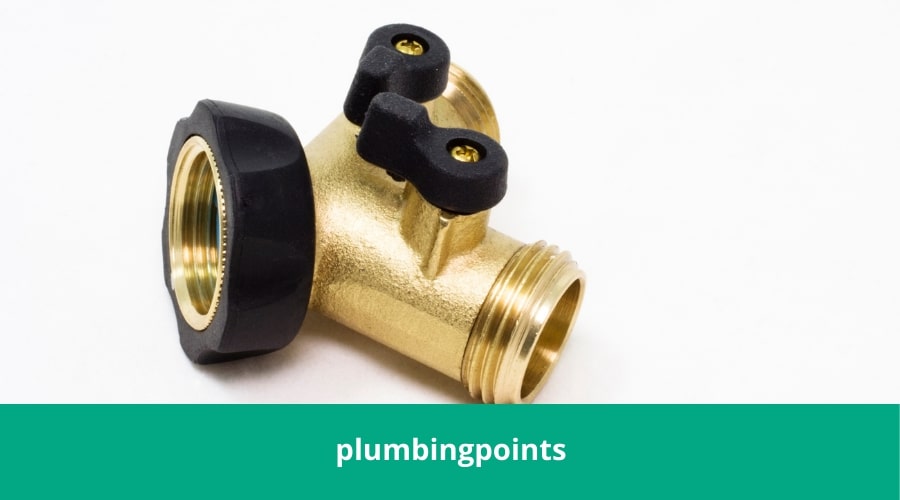Last Updated on July 2, 2023 by admin
A cutoff valve is included with toilets, just as it is with other plumbing systems. The toilet’s water supply pipe is usually where the cutoff valve is found. Every toilet should have its dedicated shutdown valve for ease.
When doing repairs or changing toilet parts, for example, you may wish to turn off the supply of water to the toilet. The toilet shut off valve not working is a very common problem faced in every household, and this article will assist you in solving that problem.

Table Of Contents
Turning Off a Toilet’s Water Supply
Close the toilet’s shut-off valve to cut off the supply of water. Step-by-step directions are provided below.
- Look behind your toilet for the shutdown valve connected to the pipe. The cutoff valve is a football-shaped valve linked to a pipe or hose connecting to the tank’s base behind your toilet. This pipe’s opposite end should be inserted into the wall. Some older toilets lack shutdown valves on the back. If this is the scenario, you may either apply the wooden board approach or shut off your whole apartment’s primary supply of water to shut off the supply of water to the toilet.
- Rotate the valve counterclockwise until it can no longer turn. The water supply to the toilet can be turned off by rotating the valve clockwise as far as it goes. Don’t push the valve to rotate if you’re experiencing difficulties. Apply some WD-40 to the water valve if it appears to be rusted or difficult to turn. If you still can’t spin it after this, you’ll probably have to replace it.
- If feasible, empty your toilet to verify that the water is shut off. The water in the rear tank will empty into the toilet bowl if the water supply is shut off, and it will not be replenished. Pull the float lever in the tank to verify if the water has been shut off when your toilet is clogged. This lever is linked to the hollow, sealed float that sits on top of the tank’s water. Lowering this lever down will provide more water to the tank if the water is still running. If the water is still running, rapidly raise the float lever to stop the tank from spilling.
Dedicated Shut Off Valve
It’s crucial to double-check if your toilet has a separate shutdown valve. Track the course of the water supply connection that enters the tank to see whether your toilet has it. Your toilet tank’s tubing may be found on one side. The tube is typically linked to the tank on one side and joined to the primary pipe on the opposite side.
Find the shutdown valve by following the tubing from the tank to the wall. The valve should be positioned such that it touches the wall. If it isn’t there, it should be hidden behind the tank. If you can’t find the valve, you may still repair your toilet by closing the main shutoff valve.
How to Turn Off Toilet Water Without a Valve

Cut off the main water supply if your toilet doesn’t have a shutoff valve. The first order of business is to locate the primary shutdown valve. Here’s how you can find it:
- The valve might be found in either a crawlspace or a basement, depending on whether your property has one. It ought to be near a road, a crossroad, or a wall. Search for any large pipes rising from the floor or passing through a wall, which are most likely 1″ pipes. The main valve is most likely the first shutdown valve you’ll find along that route. Use the valve situated near the meter if the pipe has a meter along with it.
- If there is no cellar or basement in the house you are living, then there’s a high possibility that the valve is situated somewhere around the water heater or in the garage. Be careful not to confuse your waters heater valve with your toilet valve.
- Outdoor cutoff valves are seen in certain residences, particularly in hot and humid climates. The valve should be close to the outside wall. It’s usually near a hose bib or an outside faucet.
- Close the main valve by rotating the lever clock wise after you’ve found it. Seal it with a quarter turn, perpendicular to the pipe. If the valve handle is ball-shaped or circular, turn it clockwise to close it. After switching off the primary valve, open any faucet on the bottom floor of your house to relieve any leftover water pressure in the system.
FAQ’s
1. Why do water shut off valves fail?
Shut-Off valves are practically essential for a safe and efficient home, as they allow you to quickly cut off water flow in the event of an untimely plumbing emergency. Unfortunately however, aging rubber washers can lead to failure (seizing) in these important components. It’s wise then that homeowners take extra precaution when inspecting their shutoff valve–particularly if it has been around awhile.
2. Why is my toilet still running with the water off?
A running toilet can be a pesky problem that requires some detective work to pinpoint the cause. To start, it may come down to an issue with your flush valve assembly – check to see if the chain is too short or long; either could disrupt the flapper’s ability to close properly and result in leakage.
What if I can’t find the main shutoff valve?
Answer- If you can’t find the main valve, turn off the main water meter valve instead. You’ll most likely locate it in a ground box near the nearest street. Follow the main water line from your house to the street to find the valve. By spinning the meter with your hand, you may close it. If it won’t twist by hand, try an adaptable pipe wrench.
What is the distinction between a circular handle and a lever handle?
Answer- If there is a lever grip on the valve, rotate it clockwise till the water pipe is parallel to it. If the handle is round, turn it clockwise to verify it is tight.
Conclusion toilet shut off valve not working
While solving problems with your toilet, the first thing to do is switch off the water supply. It might be intimidating if you’ve previously not handled this, or if you’re using an outdated toilet without a shutoff valve. Nevertheless, whether you’re sealing the toilet’s cutoff valve or shutting off your home’s primary supply of water, this article addresses both of them to assist you.
